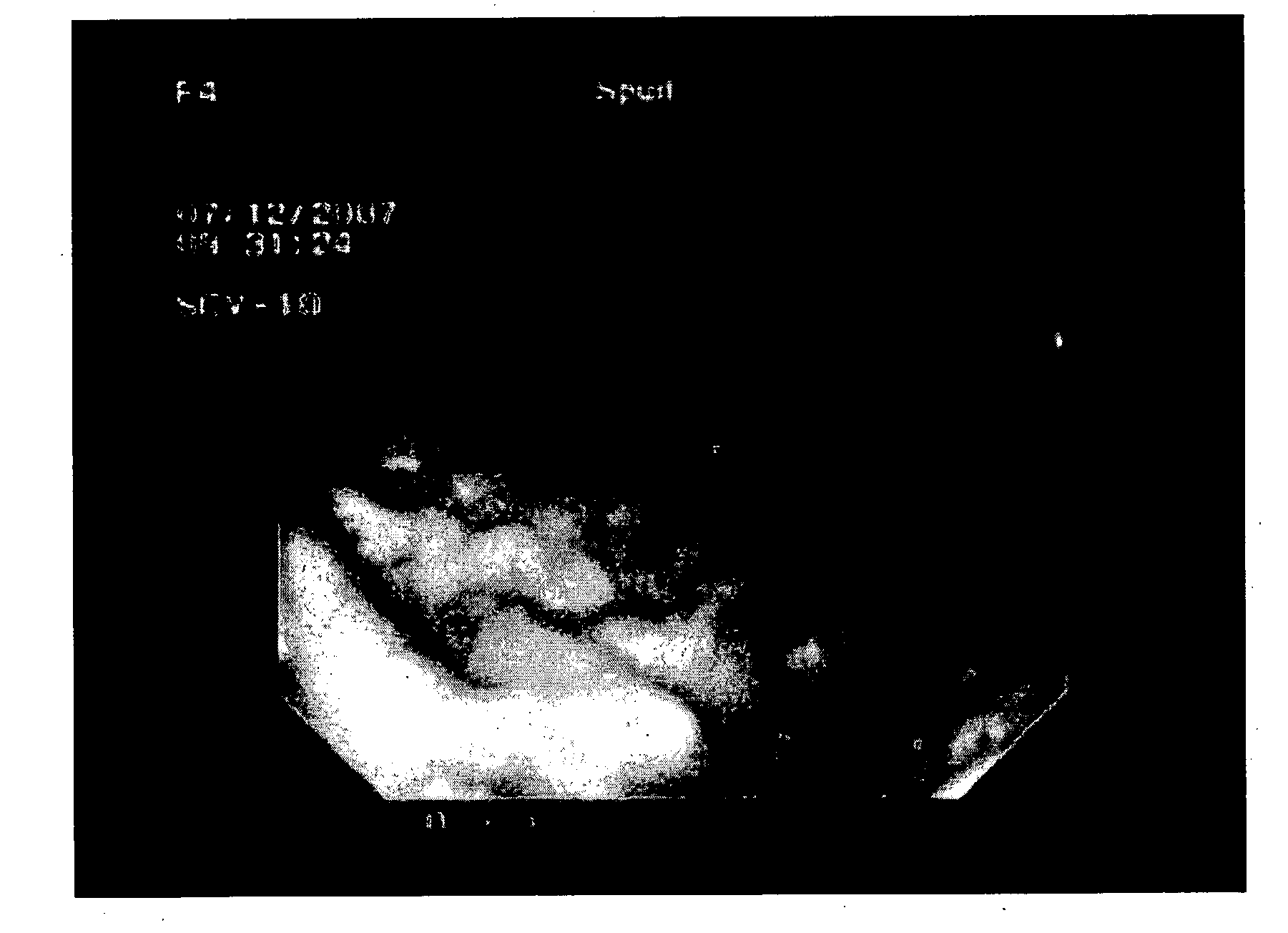Treatment of neonate foals with meloxicam
a technology of meloxicam and neonate foals, which is applied in the directions of antipyretics, analgesics, organic active ingredients, etc., can solve the problems of gastrointestinal irritation (vomiting, diarrhea and ulceration), toxicity to liver and kidney, and the effect of active ingredients in an adult may in fact be toxic to a newborn or young mammal
- Summary
- Abstract
- Description
- Claims
- Application Information
AI Technical Summary
Benefits of technology
Problems solved by technology
Method used
Image
Examples
example 1
Liquid Suspension Composition
[0058]The liquid oral suspension of the present invention is comprised of the ingredients listed in Table 1.
TABLE 1PercentageStandard AmountIngredient(w / v)(g)Meloxicam1.20%120.00Glycerol12.00%1200.00Xylitol14.00%1400.00Sodium Benzoate0.10%10.00Citric Acid0.14%14.00Sodium dihydrogen1.54%154.00phosphateSodium Saccharin0.10%10.00Xanthan gum0.50%50.00Sorbitol18.00%1800.00Water66.42%6642.00Total114.00%11400.00
[0059]The following steps were taken to formulate the liquid oral suspension composition containing meloxicam at a concentration of 12 mg / ml from the ingredients listed in Table 4.
[0060]In a suitable vessel collect the Water. To the water carefully add the Sodium Benzoate, Citric Acid, Sodium dihydrogen phosphate, Sodium Saccharin and Xylitol, mix to dissolve. Add the Xanthan gum and mix until completely hydrated. Next add the Sorbitol and Glycerol, mix until uniform. Transfer the bulk to the closed mixing vessel and continue mixing. Mix until a homogeno...
example 2
Single Dosage Plasma Concentration Study
[0061]Ten healthy thoroughbred foals were recruited for this study. Foaling was supervised for each foal, and each was under veterinary supervision from the time of birth until recruitment into the study. All foals were healthy at the time of study; one foal was still receiving antibiotics for treatment of septic physitis of the distal femur. Mean age at the commencement of the study was 11 days (range 2 to 23 days) and mean body weight was 71.9 kg (range 53.5 to 96.5 kg).
[0062]Mares and foals were boxed on the day prior to the study, and foals underwent veterinary examination. Foals were sedated (xylazine 0.5-1.1 mg / kg, diazepam 0.05-0.18 mg / kg IMI) for placement of intravenous catheters in the left or right jugular vein on the day prior to treatment.
[0063]A single oral dose of 0.6 mg / kg of meloxicam, delivered as a 12 mg / mL suspension formulated as provided in Example 1, was given to each foal at 8 am on the day of treatment, following colle...
example 3
[0071]Six foals were available for inclusion in this part of the study and were randomly assigned to treatment (four foals) or control groups (two foals). Foals in the treatment group received meloxicam 0.6 mg / kg by mouth every 12 hours (8 am and 8 pm) for 14 days; control foals received an equivalent volume of vehicle only at the same times. All foals were healthy at the beginning of the study, although one foal was receiving ongoing antibiotic treatment for suspected septic distal femoral physitits. Average age (24.3±7.5 days) and body weight (89.8±17 kg) of treated foals at the commencement of the study were not significantly different to control foals (24.0±4.2 days and 94.7±18.0 kg, respectively) (mean±standard deviation). To ensure foals were recruited into the study within 4 weeks of birth, the study was performed twice, with 2 treated and one control foal in each replicate.
[0072]Foals were examined twice daily for the duration of the study. Staff responsible for veterinary e...
PUM
| Property | Measurement | Unit |
|---|---|---|
| concentration | aaaaa | aaaaa |
| concentration | aaaaa | aaaaa |
| concentration | aaaaa | aaaaa |
Abstract
Description
Claims
Application Information
 Login to View More
Login to View More - R&D
- Intellectual Property
- Life Sciences
- Materials
- Tech Scout
- Unparalleled Data Quality
- Higher Quality Content
- 60% Fewer Hallucinations
Browse by: Latest US Patents, China's latest patents, Technical Efficacy Thesaurus, Application Domain, Technology Topic, Popular Technical Reports.
© 2025 PatSnap. All rights reserved.Legal|Privacy policy|Modern Slavery Act Transparency Statement|Sitemap|About US| Contact US: help@patsnap.com



